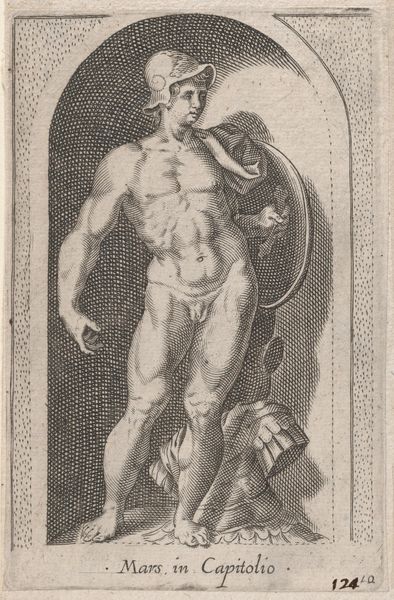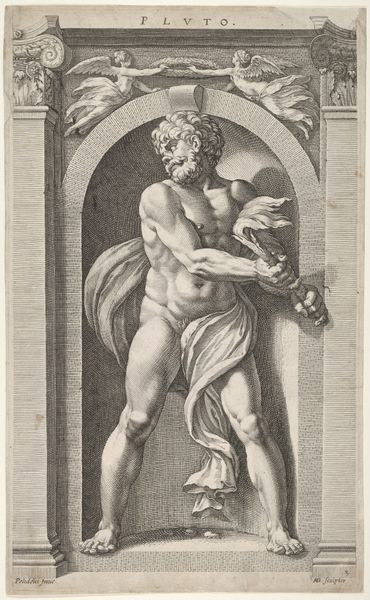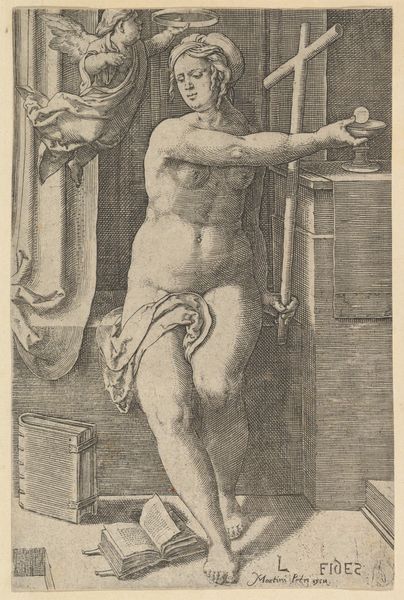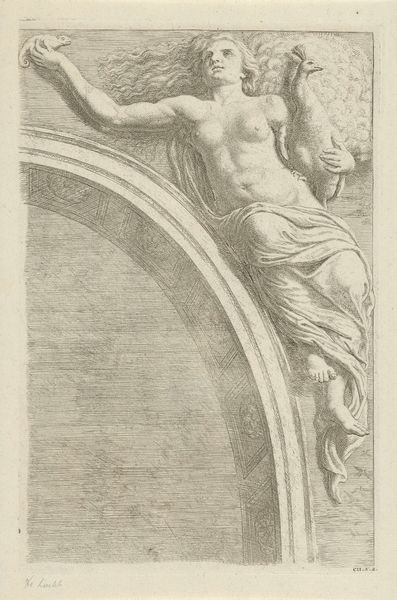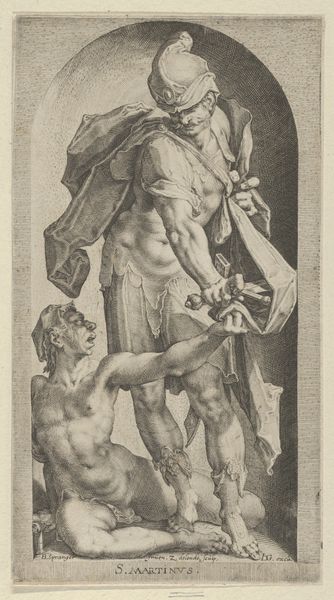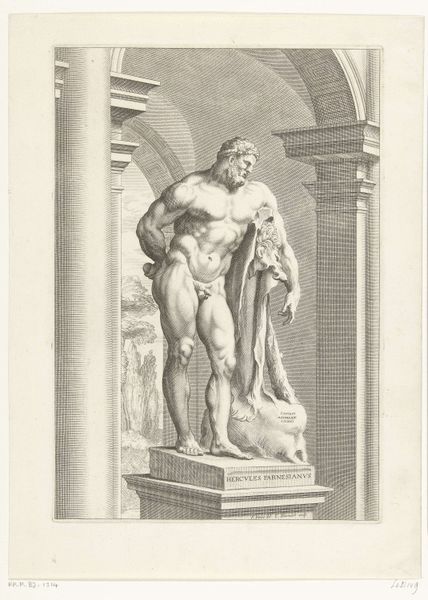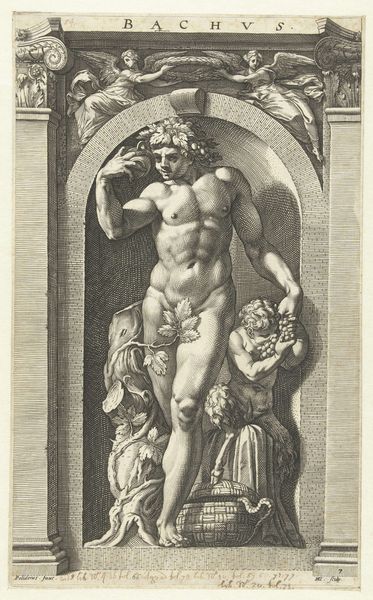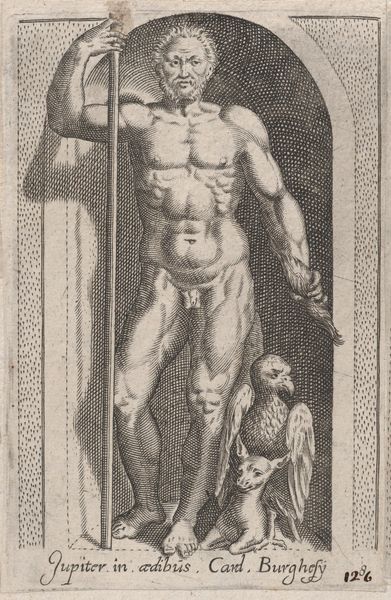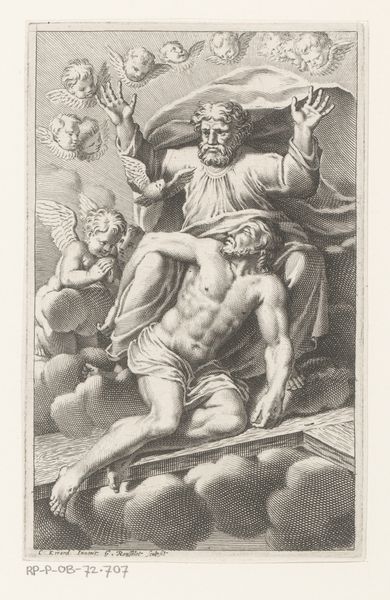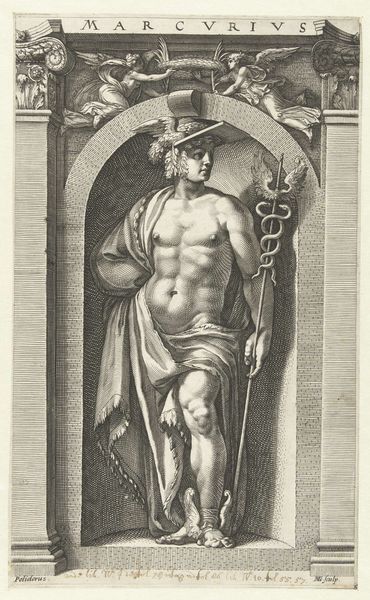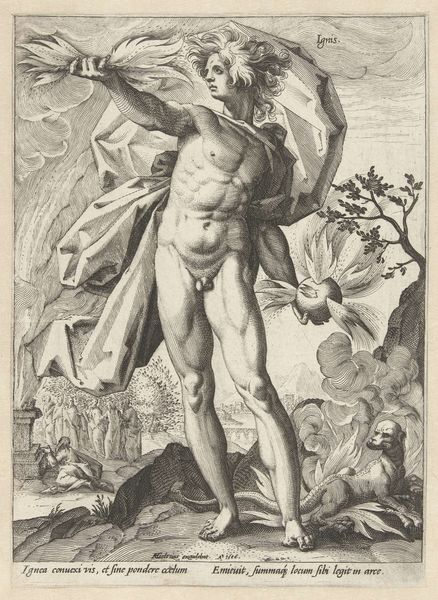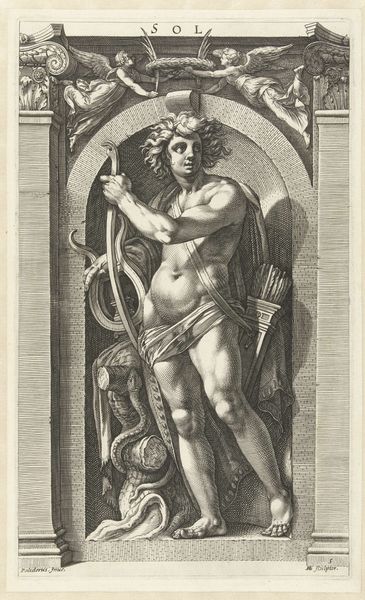
Dimensions: height 367 mm, width 158 mm
Copyright: Rijks Museum: Open Domain
Editor: This is "Bacchus and a Satyr," an 1860 engraving by J. Kuyper. The detail achieved through engraving is quite remarkable. What strikes me is how tactile everything seems; the artist really captures a sense of form. How do you see it? Curator: Immediately, I'm drawn to consider the conditions of its creation. Engravings like this from the mid-19th century catered to a burgeoning middle class, a market hungry for accessible art. We have to consider the labor involved: the engraver, Kuyper, meticulously translating, interpreting maybe, another artist's original concept into reproducible form. The materials too – the metal plate, the acid, the paper – shaped the aesthetic. Do you think this emphasis on replicability and wider circulation affects our perception of the 'aura' of this work? Editor: That's a really interesting point. I hadn't thought about it in terms of mass production and the intended market. It definitely removes it from the realm of unique masterpiece in some ways. But how does the choice of subject, Bacchus, tie into this? Curator: The figure of Bacchus, god of wine and excess, invites reflection on consumption, not just of art but of material goods more generally. The engraving presents an idealized image, but we might ask who gets to enjoy this kind of classical refinement and leisure in 1860? Whose labor underwrites the creation and appreciation of art? Look at how the vine leaves and grapes, symbols of Bacchus, are rendered. Their tactile presence highlights both abundance and the labor associated with producing these luxuries. Editor: I see now! It's more than just a mythological scene; it reflects the socio-economic landscape of the time. I hadn’t considered the implications of its creation and distribution on its meaning. Curator: Exactly. By considering the material conditions of its creation, we gain a much richer understanding of the image and its place in history.
Comments
No comments
Be the first to comment and join the conversation on the ultimate creative platform.
